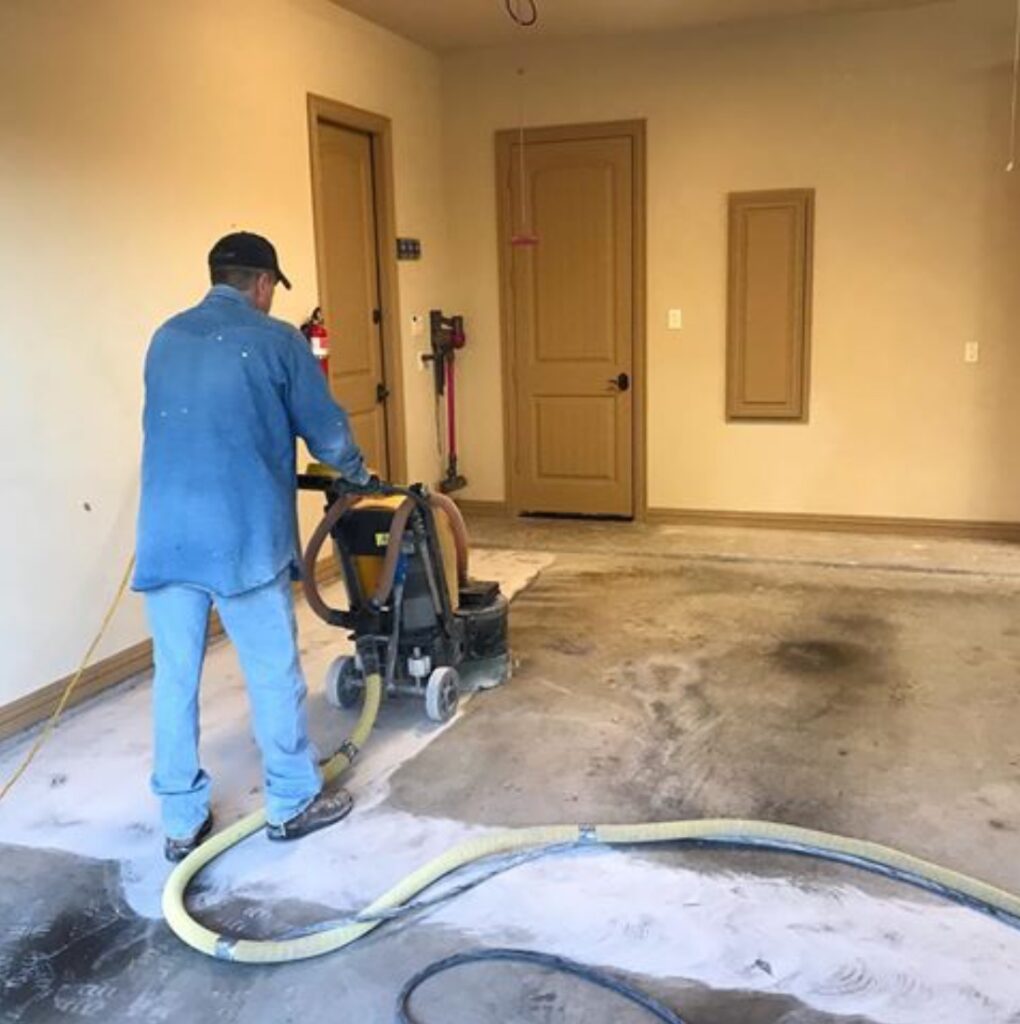
See why grinding the concrete is a must before coating your floor. A garage floor versus acid etching is a topic of much discussion when it comes to preparing concrete. Proper profiling of a garage floor is crucial to the process of applying the floor coatings.
Typical question are: 1) “Why grind and not etch it?”, or 2) “Why do you have to prep new concrete?” Let’s look at why proper prepped for a coating in important and which method is best to achieve the best results.
DO I NEED TO ETCH OR GRIND MY CONCRETE?
Unlike painting, a garage floor coating needs a good profile to bond. Grinding does a better job than etching in opening the pours of the concrete.
Garage floors have a smooth finish that doesn’t allow our coatings to bond properly. This finishing process reduces the porosity of the concrete. As a result, the thick and viscous nature of coatings cannot penetrate and soak into the surface very well.
Profiling the concrete opens up the pores giving the epoxy a good surface to be applied. Grinding is the only way to put a proper profile on the garage floor. Poor profiling, or lack thereof, is the number one reason why floor coatings fail and peel up.
Contrary to what people might think, newly poured concrete still needs a good profile.
WHICH IS BEST, GRINDING OR ACID ETCHING?
When it comes to preparing concrete for a garage floor coating, the best method is to grind the concrete floor. It provides the proper profile for a long term solution for you garage floor coating. It will also remove excess laitance that acid etching doesn’t always remove.
Concrete laitance is a very thin and weak layer of concrete at the surface. Typical created from the concrete finishing.
Applying the coating over this weak layer of concrete can cause it to fail from impacts to the surface.
When concrete repairs need to done, grinding will smooth out any concrete repairs made before applying the floor coating.
Professional floor coating contractors will always grind the concrete knowing that their floors will not fail due to insufficient profiling.
ADDITIONAL TIPS
When hiring a contractor to install an epoxy coating in your garage, make sure that they grind the concrete. A contractor that wants to acid etch is just cutting corners and you should be suspicious.
Grinding is the most important part of applying a garage floor coating and crucial that you do it correctly.
You don’t want to spend money on a beautiful epoxy floor and have it fail because of poor concrete prep.
You can checkout my grinding process here.
